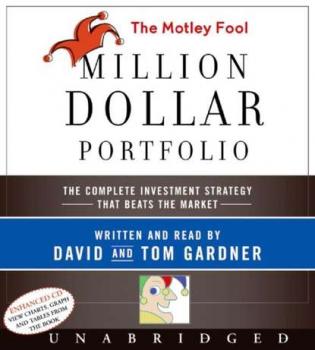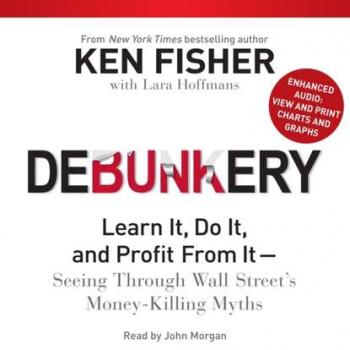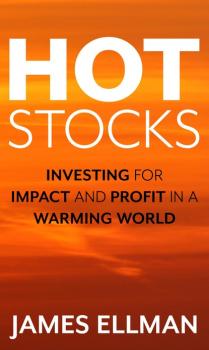ТОП просматриваемых книг сайта:
Ценные бумаги, инвестиции
Различные книги в жанре Ценные бумаги, инвестиции, доступные для чтения и скачиванияАннотация
Аннотация
There has been a rapid increase in the interest in the study of Islamic finance, resulting in a dramatic rise in financing since the beginning of the century. By the end of 2017 global industry assets had reached $2.4 trillion and were forecasted to reach $3.2 trillion by 2020, despite historic challenges to Islam itself at the same time. This collection of chapters provides key theoretical, empirical, and policy insights into Islamic finance from an overall complex financial and economic systems perspective. Within the complex financial and economic systems framework, this book addresses questions such as how to conceptualize Islamic financial institutions in a nonlinear general equilibrium system, how to promote Islamic Finance in Africa, how “Islamic” is Islamic finance, and how it affects price stability, among other topics. The book provides case studies in Africa and Asia, addresses the subject in a structural financial CGE model, demonstrates the development impact of Islamic finance, and presents an Islamic version of the Iceland Plan for Monetary Reform.
Аннотация
The world is warming, our portfolios will have to adapt, and the stocks we own can help shape our future; James Ellman shows how to invest wisely as climate change impacts multiple sectors across the stock market. The costs of global warming and its mitigation will have a major impact on equity market performance over the next two decades. As the climate changes, investors will need to understand which are the best-positioned market sectors and stocks as well as those to avoid. Hot Stocks provides a roadmap detailing how to invest in this new reality. It evaluates the many ways global warming will affect profit flows in the economy: • Impacts of a warmer climate, rising ocean levels, more frequent extreme storm events, land desertification and ocean acidification. • Potential for government taxation on greenhouse gas emissions. • Accelerating switching to renewable power systems that are increasingly cost competitive with those powered by oil fossil fuels. • Government bans on sales of cars powered by internal combustion engines and the electrification of the terrestrial vehicle fleet. • Potential for hydrocarbon reserves and equipment becoming impaired or ‘stranded assets’. • Rising demand for major infrastructure projects to protect valuable coastal real estate from inundation. • Litigation aimed at forcing legacy polluters to pay mitigation costs. The book drills down on how these changes will depress or support stocks in sectors such as the petroleum industry, automakers, renewable power providers, regional banking, property insurance, heavy equipment manufacturers, Real Estate Investment Trusts (REITs) and agricultural chemicals. The analysis then pivots away from a US-centric focus to identify those nations around the world whose economies are best positioned to successfully adjust to the impact of rising prevailing temperatures, as well as those likely to suffer the most from the trend.
Аннотация
A practical and detailed Australian guide exposing the 'secret recipe' of how to build, structure and automate a multi-million dollar property portfolio that will enable you to create financial independence and the lifestyle that you and your family deserve!<br /> <br />– In this book you will discover advanced Australian property investing strategies, and learn specific real estate finance and property due-diligence methodology, that will give you the confidence and skills to start building your property portfolio as soon as you finish reading this book.<br />– Learn how to set up your loans correctly, asset protection structures, and identify the very best areas for growth properties in Australia that will enable you to fast-track your ability to build a Multi-Million dollar property portfolio in your spare time.<br />– This book reveals the ‘secret recipe’ on how to correctly structure your finances with the objective of maximising leverage and tax efficiency, whilst focusing on buying more investment properties and simultaneously paying off your home loan in record time, thus saving you tens of thousands of dollars in unnecessary interest payments over the life of the loan.<br />– Gain insights on how to understand property cycles, state by state, and exactly how to hone in, with laser-like precision, on Melbourne’s hot spots in 2020 and beyond.<br />– How to conduct a cash-flow analysis in order to compare the advantages and disadvantages of different types of investment properties, i.e. house and land, townhouses or apartments.<br />– How to identify, assemble, and leverage, the very best property consultants and property industry experts that will take years off your learning curve, and enable you to grow your portfolio in the most efficient way possible.
Аннотация
Modeling the dynamics of energy markets has become a challenging task. The intensification of their financialization since 2004 had made them more complex but also more integrated with other tradable asset classes. More importantly, their large and frequent fluctuations in terms of both prices and volatility, particularly in the aftermath of the global financial crisis 2008-2009, posit difficulties for modeling and forecasting energy price behavior and are primary sources of concerns for macroeconomic stability and general economic performance.This handbook aims to advance the debate on the theories and practices of quantitative energy finance while shedding light on innovative results and technical methods applied to energy markets. Its primary focus is on the recent development and applications of mathematical and quantitative approaches for a better understanding of the stochastic processes that drive energy market movements. The handbook is designed for not only graduate students and researchers but also practitioners and policymakers.<b>Contents:</b> <ul><li><b><i>Modeling and Forcasting Approaches:</i></b><ul><li>Evolution of Forecasting Techniques for Dynamic Energy Markets <i>(Julie Carey and Derya Eryilmaz)</i></li><li>Econometric Modeling of the World Oil Market as a Dynamic Game <i>(Khaled H Kheiravar and C-Y Cynthia Lin Lawell)</i></li><li>Forecasting the Return Volatility of Energy Prices: A GARCH-MIDAS Approach <i>(Afees A Salisu and Raymond Swaray)</i></li><li>Bayesian Approach to Energy Load Forecast with Neural Networks <i>(Luca Di Persio and Oleksandr Honchar)</i></li><li>Electricity Market Coupling in Europe: Status Quo and Future Challenges <i>(Roland Füss, Steffen Mahringer and Marcel Prokopczuk)</i></li><li>Spatial Econometrics in Electricity Markets Research <i>(Rita De Siano and Alessandro Sapio)</i></li><li>An Investigation into Dynamics, Elasticity and Asymmetry for Residential Natural Gas Markets <i>(Kelly Burns and Tom Houghton)</i></li></ul></li><li><b><i>Volatility and Jump Modeling:</i></b><ul><li>Applied Models of Heavy Tails and Skewness in Energy Prices with an Application to Electricity Price Risk <i>(W D Walls and Wei Zhang)</i></li><li>Jumps in Energy Commodity Markets <i>(Neil A Wilmot and Charles F Mason)</i></li><li>What is the Probability of an Electricity Price Spike? Evidence from the UK Power Market <i>(Paweł Maryniak and Rafal Weron)</i></li><li>Stochastic Modeling and Pricing of Energy Markets' Contracts with Local Stochastic Delayed and Jumped Volatilities <i>(Anatoliy Swishchuk)</i></li><li>Volatility Spillover Effects in the Oil and Financial Market: Cross-Hedging in the US Oil Market and the Energy Pipeline Sector <i>(Jingze Jiang and Thomas L Marsh)</i></li><li>Analysis of NCG Prices Under Different Shapes of Oil Price Recovery with a Worldwide Gas Market Model <i>(Maik Günther and Mostafa Fallahnejad)</i></li></ul></li><li><b><i>Regulation, Risk Management and Network System:</i></b><ul><li>Energy Risk Management in Practice <i>(Wieger Johan Hinderks, Andreas Wagner and Prilly Oktoviany)</i></li><li>Optimal Design of Energy Distribution Network using Power Flow Controller <i>(Takayuki Shiina)</i></li><li>The Troubled Path Towards Greater Transparency as a Means to Foster Good Corporate Governance and Fight Against Corruption in the Energy Sector<i>(Costantino Grasso)</i></li><li>The Hidden Role of Civil Liability in the Electronuclear Industry: Accident Costs, Insurance and Industrial Organization <i>(Gérard Mondello)</i></li><li>Estimation of the Hotelling Rule for Oil under Stochastic Investment Opportunities <i>(Johnson Kakeu and Mohammed Bouaddi)</i></li></ul></li><li><b><i>Environmental, Green and Renewable Energy:</i></b><ul><li>Financing the Reduction of Greenhouse Gas Emissions: A New Allocation System for Dependent Risks <i>(Lorena Remuzgo, Carmen Trueba and José María Sarabia)</i></li><li>Efficiency of Source Differentiated Sectoral Energy Demand Accounting for Climate <i>(Saleem Shaik)</i></li><li>Impact of the Global Financial Crisis 2007 on Project Finance in the Renewable Energy Sector <i>(Iris Pfarl and Christian Bellak)</i></li><li>Environmental Concerns and the Cost of Equity in the US Energy Sector <i>(Marcelo Bianconi and Xue Wang)</i></li></ul></li><li><b><i>Pricing and Hedging:</i></b><ul><li>German Natural Gas Seasonal Effects on Futures Hedging <i>(Beatriz Martinez, Hipòlit Torró and Vanesa Garcia)</i></li><li>An Alternative Valuation of Energy Options for Atypical Markets <i>(David G Carmichael and Maria C A Balatbat)</i></li><li>Non-Financial Firms Hedging Risks in East Asia: The Link Between Financial Derivatives Use, Firm Value and Exposures to Country Risks <i>(Trang Kim and Quang Nguyen)</i></li><li>Risk Management and Hedging Approaches in Energy Markets <i>(Jim Hanly)</i></li></ul></li><li><b><i>Cross-Market Linkages:</i></b><ul><li>Modeling the Dynamics of Implied Carbon Price and Its Influence on the Stock Price Variability of Energy Companies in the Australian Electric Utility Sector <i>(Liangxu Zhu and Tiho Ancev)</i></li><li>Cointegrating Relationship and Granger Causal Analysis in Energy Economics — A Practical Guidance <i>(Zheng Fang and Thai-Ha Le)</i></li><li>The Impact of Unconventional Monetary Policy Shocks on Energy Prices<i>(Panagiota Makrychoriti, Georgios Moratis and Spyros Spyrou)</i></li><li>Chaos vs Stochastic Paradigm in Energy Markets <i>(Loretta Mastroeni and Pierluigi Vellucci)</i></li></ul></li></ul><br><b>Readership:</b> Graduate students, researchers, practitioners and policymakers in the field of energy finance. Energy Finance;Financial and Economic Modeling;Volatility;Forecasting;Quantitative Finance;Energy Markets0<b>Key Features:</b><ul><li>Offers a state of art on the application of innovative mathematical and statistical approaches to energy markets modeling, forecasting and hedging</li><li>Provides new theoretical and empirical results regarding the behavior of energy markets over the recent years</li><li>Brings insight into energy risk management and modeling under the context of increasing economic and financial uncertainty</li></ul>
Аннотация
Информационный шум вокруг блокчейна не стихает уже несколько лет. Благодаря этой технологии участники криптовалютной золотой лихорадки обогатились феноменально быстро и вне регуляции законом. Но шумиха в СМИ сформировала не совсем корректное представление о блокчейне. Возможности технологии, которую многие эксперты сейчас называют «новым интернетом», гораздо глубже. Она продолжает развиваться и нашла применение уже в 25 отраслях. Государственные услуги, авторское право, финансовые рынки, медицина, страхование, образование – это лишь часть направлений, где применяется блокчейн. Зачем слушать Авторы делятся собственным видением эволюции блокчейна и подвергают сомнению распространенную классификацию поколений этой технологии. Вы узнаете, каких результатов уже удалось достичь благодаря блокчейну, какие есть проблемы в развитии этой прорывной технологии и о том, какие усовершенствования нужны для дальнейшего ее прогресса. Для кого Книга будет полезна не только специалистам, но и тем, кто хочет разобраться в реальных возможностях блокчейна и узнать о потенциале технологии. Об авторах Александр Табернакулов – Основатель и руководитель PR-агентства для технологических компаний Filigran. Колумнист Forbes. Подготовил более 200 статей о блокчейне и финансовых технологиях в должности главного редактора коммуникационного агентства при блокчейн-платформе Waves. Участник Экспертного совета по законодательному обеспечению развития финансовых технологий при Государственной думе РФ в 2017–2018 гг. Основатель и главный редактор периодического издания для топ-менеджеров банков «Дайджест мировых финансовых технологий». Автор онлайн-курса «Как писать о блокчейне». Ян Койфманн – Сооснователь и CEO блокчейн-платформы для управления электроэнергией NS, а также компании – производителя энергосберегающих устройств EnesFilter. В 2002 г. окончил МГГУ (Московский государственный горный университет) по специальности «инженер-системотехник». С 2002 по 2016 г. руководил развитием предприятий в сфере IT, а также занимал должность помощника министра природных ресурсов Виталия Артюхова. Объединив полученный опыт работы в сфере экологии, IT и бизнеса, создал проект Enes, ставший в 2017 г. резидентом Фонда «Сколково». © Storysidе
Аннотация
On the heels of a decade of scandals and the new pressures brought on by the Sarbanes-Oxley Act, corporations expect far more from their CFOs than simply managing the numbers. They expect decision-making support and performance insights that can improve bottom-line results. Unfortunately, the complexity and detail inherent in CFOs’ jobs keep them shackled to budgeting and transaction-processing systems that leave little time for value-adding activities.Jeremy Hope says it’s time to redefine the role of CFOs in today’s organizations, liberating them from ineffective number-crunching responsibilities and enabling them to focus on helping managers improve performance. Grounded in extensive research, Reinventing the CFO outlines seven critical roles—from streamlining redundant processes to regulating risk to identifying a few key measures—that CFOs must take on in order to successfully transform the finance operation.Challenging many of the finance field’s accepted practices and systems, this bold book revolutionizes the role of financial managers and frees them to make smart, ethical, strategic decisions that add real value to the firm.










